#5 One Professor honorably resigns but another lies to the US Military & Congress
Was SARS2 a planned mistake or an honest academic crime?
Same disclaimer from part 4: this is obviously a Wuhan lab leak hypothetical based on an accident, not an accusation. A series of posts not so much to discuss ‘lab’ leak but ‘what’ leaked. Written to answer the two biggest questions:
Why did WIV publish RaTG13 on January 24, 2020, kickstarting engineering rumors by US virologists, leading to a February 1st teleconference drafting a natural origin paper, later edited, referenced, and distributed by Fauci in a major press conference?
Why only North American (lab) animals (not Chinese bats), can become both infected and ‘efficiently’ transmit SARS2?

Why did the world’s top bat virologist resign?
Dr Linfa Wang, a US-educated Duke University professor, was in Wuhan from November 24-30, 2019. This was an ‘off the record’ trip to the Wuhan Institute of Virology’s BSL4 lab. The world’s top bat virologist then returned home to Duke’s campus in Singapore and monitored the local Chinese message boards for any bad New Year’s news. It came on December 26th.
International video link
On January 6, 2020, Linfa told the NYT he was frustrated that scientists in China were not allowed to speak to him about the outbreak. Linfa, like most virologists, wanted to know the full 30,000 nucleotide genome sequence of SARS2 since this could be used to identify the origin of the virus. He said, “We should not go into panic mode.” Four days later, he sent an email resigning as director of Duke’s Emerging Infectious Disease program in Singapore, a position only he held for nearly a decade.
On the same day Linfa resigned, Friday, January 10th, the SARS2 sequence was finally released and its digital fingerprint was recognizable to its creator: Western virologists. In Linfa’s own words, “That was the most important day in the COVID-19 outbreak.”
Linfa was “a Co-principal investigator” on an unfunded DARPA grant but was fully aware of a proposed novel coronavirus, with an inserted furin cleavage site, that was to be tested on Chinese bats at the Wuhan Institute of Virology (WIV). The furin cleavage site is the “magic sauce of this virus, whether it is natural or genetically modified, this is why SARS2 is circulating in humans.”
Linfa’s January 10, 2020, resignation date as director of Duke’s Emerging Infectious Disease program was confirmed via personal correspondence on February 7, 2023 (he is the only one to have bravely responded). His resignation was not effective until August 31, 2020, as shown on his updated CV, but he is still a professor at Duke-NUS. This was a public resignation of a public figure on a critical January 10th date, but never ‘reported’ until now.
The SARS2 sequence was available on GISAID (January 10th Singapore time) before it was ‘officially’ released by a Western virologist on January 11th. The sequence was even uploaded to NIH Genbank on January 5th (under embargo) so “the United States certainly knew about this virus.”
Western virologists were aware of the “highly unusual” and “peculiar” SARS2 furin cleavage site by January 10-12, 2020.
On Jan 8, Linfa sent NIAID an email, “It is 80% identical to SARS1 at the whole genome level.”
On a personal note, Linfa was the best teacher of all the bat virologists. I used to think bats were icky creatures, but they are now ‘sky puppies’. He tells his students that we are “in a pioneer area…so everything you do, you will be the first in the world.”
Duke shut down its bat research program?
The Singapore government, just three years earlier, deemed Linfa’s $10M bat research to be “cutting-edge, with potential relevance to Singapore.” The US Government, in 2019, chose his Asian bat research to be a part of an $82M NIAID CREID contract, headed by Duke University in North Carolina. There was a ‘spike’ in SARS2 related research (and furin cleavage sites) in the summer of 2019, presumably US Universities bidding on NIAID’s version of the DARPA project, called CREID.


Duke never officially announced Linfa’s resignation and only recently (& quietly) named his permanent replacement. Duke has quietly shut down its One Health Initiative, which “bridged human medicine and veterinary medicine.”
Linfa was a renowned expert recognized in Singapore for emerging infectious diseases. Anthony Fauci was a longtime funder, colleague, and sponsor of Linfa’s December 2019 Singapore bat conference. Would Fauci have known of this high-profile resignation on this high-profile January 10th date?
A Fauci-led coverup
After the SARS2 sequence was published on January 10th, 2020, Fauci held a weekly teleconference starting the “second week of January” with his Rocky Mountain Lab (RML) in Montana. The weekly January meeting potentially involved contractors on the CREID Network (Baric & Daszak discussed a Jan 14th NIH teleconference).
Most of us would not learn of a city named Wuhan until late January. But Fauci recalled “dribs and drabs of information from China” in December 2019. He claimed US CDC Robert Redfield called him on New Year’s Eve, but Redfield was not called by the China CDC until January 3rd. Fauci did recall after hearing about the Wuhan wet market “jump to 24 people at the same time, that’s just not the way zoonotics occur.”
Fauci would later exclude Redfield from a lab leak teleconference, whose “goal was to have a single narrative.” But Fauci’s close confidant, Ian ‘Virus Hunter’ Lipkin of Columbia University, was on record hearing Wuhan flu rumors by December 15th and being called by China CDC on December 31st.
On December 3rd, 2019, Fauci met with Marshal Bloom, who was the director of his RML facility in Montana. That same day Fauci held another meeting with Victor Dzau, a Chinese-born colleague of Linfa at Duke University in North Carolina.
On December 19th, 2019, NIH hastily scheduled a Gain-of-Function (GoF) meeting, held just one month later on January 23-24, 2020 (Event 202?). This GoF meeting was an annual event, but it was the first one since 2017. Before the Wuhan outbreak, NIAID and Fauci were caught secretly funding GoF research in 2018-19.
The first American news report about the mysterious Wuhan pneumonia was on January 7th, and NIAID staffers discussed funding for the Wuhan Institute of Virology on January 8th. Later in April, those same staffers discussed a female contractor at Duke, located in Wuhan, who would “provide her expertise” on testing Chinese viruses.
It is not clear what Fauci knew and when, but his first of many high-level National Security Council (NSC) meetings was on January 16th.
Fauci would meet with the NSC 16 times in January and February, sometimes in a sensitive compartmented information facility (“SCIF”) at NIH and the White House Situation Room.
The schedule shows Fauci meeting with NSC Director for Countering Biological Threats Phil Ferro, Senior Director for Counterproliferation and Biodefense Anthony Ruggiero, and NSC official Lauren Fabina. These meetings may have involved many officials across a constellation of agencies, according to a separate document obtained by U.S. Right to Know.
Phil Ferro now heads a $100M investment into live bat research, which includes Linfa Wang as a founding advisor.
Who inserted the furin cleavage site?
In early January, most Western virologists were aware of the odd furin cleavage site (PRRAR) in this novel coronavirus. “Of course,” a few virologists like Linfa knew about the proposed furin cleavage site from an unfunded DARPA grant. It was not until after WIV published the natural RaTG13 bat sample on January 23rd, which “fueled” the engineering rumors, and “prompted” Fauci to cover up a lab leak.

SARS1 did not have a furin cleavage site like SARS2, which was “much enhanced by respiratory route” and became one of “the most infectious viruses that we know in humanity.” The SARS2 furin cleavage site was later called the “smoking gun” for engineered origins.
All of the prominent virologists on the rejected DARPA Defuse proposal, are currently listed on Fauci’s $82M CREID network, awarded in 2019. Linfa and Peter Daszak of EcoHealth, both confirmed the furin cleavage site was to be inserted by Dr Ralph Baric at the University of North Carolina.
From Red Dawn emails to Gmail
Early in the outbreak, various US government officials started an email chain aptly named Red Dawn. They included America’s top coronavirus expert; Ralph Baric. He was specifically asked by the US Military (US Army Fort Belvoir doctor) about “any restriction sites in the SARS2 strain…suggesting it was engineered?” Baric quickly replied “no” but failed to mention the BsaXI restriction site, which he published in 2017. He also failed to mention the odd furin cleavage site, which UNC published in 2018 (RRAR). That particular restriction site flanks the furin cleavage site in SARS2.

The Economist reported on other (BsaI) restriction sites in SARS2 genome but those are designed to be removed, only BsaXI was designed to be “retained.”
Baric (and his UNC-employed wife) switched to Gmail in May 2020 as the outbreak ravaged America.
Before the virus reached US shores, Baric gave a one-hour technical presentation to US Congressional staff in February 2020, but he never mentioned the furin cleavage site. He never mentioned his ongoing collaboration with the WIV. He never disclosed that, just two years earlier, he proposed to insert furin cleavage sites into live coronaviruses and test on live bats in Wuhan.
Ralph Baric “wrote that section of the DARPA grant” in 2018.

The February 2020 presentation at the US Capitol building, and the Red Dawn lie in March, were just days after Fauci privately met with Baric in Washington D.C. They discussed “the outbreak and chimeras.” Chimera or chimeric appears 34 times in DAPRA Defuse and 16 times in Fauci’s CREID. It’s a virology term to genetically engineer two or more strains into one virus, something that resembles SARS2.
In 2022, Fauci testified under oath that “I cannot say for certain if I've ever met (Baric).” But during a 2021 Congressional testimony, Fauci was asked if he funded Baric’s gain-of-function coronavirus research and responded: “If (Baric) is, it is according to the (NIH) guidelines, and it is being conducted in North Carolina.”
Fauci played a brilliant word game, a half-truth, stating categorically, “The NIH has not ever, and does not now, fund gain-of-function research in the Wuhan Institute of Virology.” Because the SARS2 (animal vaccine) was created on US soil, in US labs, and shipped to Linfa in Singapore for testing on live Chinese bats in Wuhan.
What was Fauci’s CREID?
The University of California in Davis ran a bat-borne virus program called PREDICT for a decade. The grandiose idea was to ‘predict' the next SARS1 outbreak by cataloging SARS-like bat samples in China. This program ended in September 2019, but at the same time, NIAID awarded a new $82M U01 project (not to be confused with ongoing and much smaller R01 work at WIV). This new CREID project shipped the same Chinese bat samples to US labs in North Carolina and Montana.
Viruses designed in North Carolina and Montana could easily be tested in Wuhan: “The mail is filled with little envelopes with plasmid dried on to filter paper that scientists routinely send each other.”
Fauci later told the NYT that his CREID project was in the “works years before USAID Predict was eliminated (in 2019), and it was created in response to the 2014 West African Ebola outbreak and the 2016 Zika epidemic.” He said, “Yes, it’s like Predict, but it wasn’t the cancellation of Predict that inspired it.” It was awarded to the same group of universities and labs previously collaborating with Wuhan; UC Davis, Duke, UNC, EcoHealth, and UTMB Galveston.
In 2020, Fauci’s fledgling NIAID CREID team, agreed to use the same talking point; SARS2 was a bat virus that jumped directly to humans from bats. A direct jump of a contagious SARS-like virus from bats to humans, without an intermediary species, was unprecedented.


Fauci claimed CREID was “inspired” by previous natural spillovers. All previous bat viruses (Hendra via horses, Nipah via pigs, MERS via camels, rabies via dogs) used an intermediary species to jump from bats to humans. The SARS1 intermediary species was found by the time it burned out in the summer of 2003.
Fauci even discussed the SARS1 outbreak nearly 20 years ago (at 32:00) and commented on the intermediary species being a masked palm civet: “It is amazing what you learn if you just hang around long enough.” The ‘intermediary species’ for SARS2 will later turn up in Fauci’s Montana lab!
The SARS2 spillover narrative was a white lie because a direct jump, from bat to human, was the type of event that led to patient 0 in Wuhan. Her name was Dr Danielle Anderson, who was Linfa’s subordinate and Fauci’s CREID contractor, stationed in the WIV’s BSL4.
Was Dani patient 0?
On January 18th, 2020, Linfa had just returned home to Singapore from his second trip, in just two months, to Wuhan. He was managing not just one, but two Fauci funded projects at the WIV. One was ‘on the record’ with Dr Shi Zhengli in her BSL2 lab (R01) and another was the new $82M NIAID project (U01) with Dani in the remote BSL4.
Two weeks later, on January 30th, a calm but tired Linfa appeared on American television. He quoted Donald Rumsfeld by calling SARS2 a ‘known, unknown.’ Earlier in 2019, both Linfa and Dani referenced Ralph Baric’s research in their ‘known unknown’ coronavirus paper.
Dani’s first public appearance was on the same day as Linfa, January 30th, also back home in Singapore. She claimed the SARS2 source was possibly “a bat virus spread directly to people” via the wet market, and it was now called ‘Wuhan coronavirus.’
Dani had left Wuhan in November 2019, after three years of Wuhan-based bat research, for unannounced reasons. She, like Linfa, was a world-class bat immunologist who traveled the world studying live bats. She was also the Scientific Director of the Duke’s BSL3 “bat colony” and basically Linfa’s #2.
Notice the Duke Blue Devil pennant over her right shoulder and CCTV of the bat lab over her left shoulder.
One day later, on Friday night, January 31st, Fauci was formally told via email that SARS2 “looks engineered.” But he already knew SARS2 was engineered because Linfa’s resignation was a well-known secret. Fauci also knew his $82M CREID contractor, Dani, was inside the Wuhan BSL4.
“The grant itself was written in June 2019”
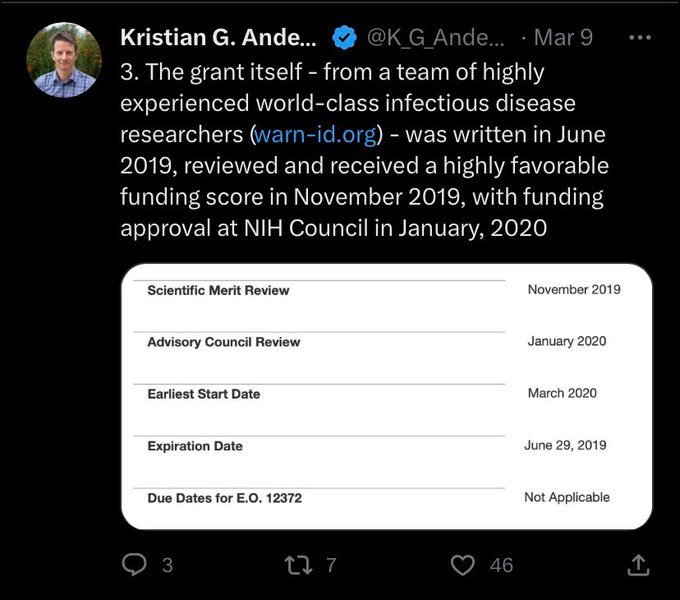
Fauci awarded his $82M CREID project in 2019, but it was formally announced in 2020. The same virologists who told Fauci that SARS2 “looks engineered” were later added to the CREID project. Kristian Andersen (not to be confused with Danielle Anderson), deleted his twitter account after the Fauci gate emails were released. He then came back to Twitter to defend Fauci’s CREID program, noting the November 2019 “scientific merit review,” but has since deleted his account again. His San Diego lab was also awarded $9M for this CREID project and a recent $13M NIH renewal.
Kristian rang the biological fire alarm after Shi and WIV had (re)published the natural RaTG13, kickstarting engineering rumors on virologists forums. Fauci later “prompted” Kristian to write the natural origins paper in February, which he referenced in April at a major press conference.
Notice Fauci didn’t remember Kristian’s name after having extensive conversations with him just two months earlier! Fauci, three days later, distributed the natural origins paper to the journalist.
Dani the celebrity
Since most of the lab leak attention was focused on Shi Zhengli’s BSL2 lab, not Dani’s BSL4 located 15 miles away, she became a minor TV celebrity and Facebook lab leak fact checker. Ironically, it was Dani’s Facebook factcheck, in March 2020 of a NYP article, that brought attention to herself. In early 2020, it was not public knowledge she was at the Wuhan BSL4 “at various times for the past two years.”
The Chinese embassy in Australia also released a defensive statement using Dani’s name. But the Wuhan Institute of Virology (WIV) website deleted Duke and Linfa as partners (EcoHealth remains). Linfa later told the NYT a half-truth; “it’s a crazy, wrong idea, if you know about viruses, the (WIV) didn’t have that novel coronavirus in (Shi’s BSL2) laboratory.”
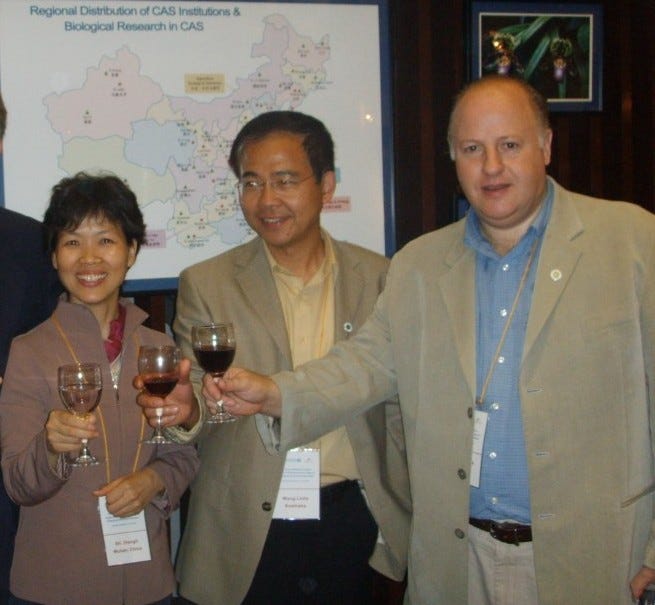
Ralph Baric later told CNN and MIT that Shi’s BSL2 was a possible source for SARS2, always seemingly drawing attention away from Dani’s BSL4.
Linfa has been chairman of a scientific advisory board at the WIV since 2007 and would have vouched for Dani in the new Wuhan BSL4. Around that same 2007 timeline, Linfa started collaborating with Fauci’s NIAID on his bat disease research. By June 2019, both Linfa and Dani were bidding on Fauci’s $82M CREID project.
Linfa described Dani as “very committed and dedicated,” and similar in personality to Shi. “They’re both very blunt with such high moral standards.” Dani was a member of the Lancet Covid-19 commission investigating the SARS2 origin, but it was so full of conflicts of interest that chair Jeff Sachs, sacked it. Dani claimed, “Instead of being clearly defined by specific criteria, conflict of interest became a personal, shifting opinion that I believe was politically motivated.”
Dani does not “rule out” a lab leak but she was adamant SARS2 was not “engineered and released.” She believes it was a “natural acquired infection at some point, somewhere.”
How do BSL4 labs operate?
Dani noted, “The public also has little knowledge that (BSL3-4) scientific work is based on collaboration and on extensive collaborative work internationally.”
The network ecosystems of BSL4 (and some specialized BSL3 labs) have highly dense connections and almost daily (if not daily) interactions with other peer labs within China and across the world. This is due to the finite number of these labs as well as the highly specialized research that occurs within them that only a select group of scientists are even capable of conducting.
Flows between these labs include (but are not limited to) datasets, scientific/clinical opinions, new technological methods and parameters for experiments, personnel themselves, physical samples, re-agents, and even temporary loaning of spare capacity. For example, one common practice is to allow peer labs to utilize polymerase chain reaction (PCR) machines and other hardware that is being underutilized in its current environment. Internationally, the overall mode of interaction between BSL4 labs is collegiate with little competitive friction between groups due to a clear strategic preference from international funding bodies for multi-institutional and even multi-country research. As such, barriers to the abovementioned flows are minimal.
Dani later pushed the frozen food hypothesis, a theory that SARS2 was imported into China via “food packaging.” Don’t worry because Dani and Linfa’s collaborator, Dr Vincent Munster, and his boss, Fauci, also entertained a food packaging conspiracy.

When Asian virologists like Shi and Linfa send US virologists like Munster and Baric “duplicate samples” from Chinese bats, it is via “plasmid dried on to filter paper.” When US virologists like Munster in Montana, send bat immunologists like Dani in Wuhan a vaccine for animal testing, it is sent via dry ice and very secure packaging.
One of many examples (26:30) about this shipment procedure:
The deadly coronavirus arrived by courier on Feb. 6, 2020, delivered to a windowless air-locked laboratory in a secret location on the University of North Carolina at Chapel Hill campus. It came sealed in two 500-microliter vials, wrapped inside plastic pouches, placed inside a third sealed plastic container, all packed with dry ice. A team of scientists — protected head-to-toe by Tyvek body suits with battery-powered respirators — opened the vials, got down to work and haven’t stopped since.
A vaccine created on one continent can be tested on another, from Washington D.C. to Linfa, within “48 hours.” And Dani’s boss had a decade-long collaboration with Vincent Munster and Fauci’s Montana lab.
Transnational virology research is like an “anarchical society” where international collaboration between the unregulated scientific communities of China, the West and Japan has often been ignored by many national governments and regional organizations.
A Canadian scientist recently lost her BSL4 job in 2019 for sending the WIV samples. The paperwork for the shipment was “not done the right way.” They are called MTA’s, for material transfer agreements “to ensure the free exchange of reagents needed for research purposes only and fully supported by the NIH.” Basically, every contractor and subcontractor sign them at the bottom of each R01 and U01 NIAID contract. Contractors like WIV and Duke agree to “sharing of technology, samples, reagents, data and research results.”
A division of bat labor, that started well
Dr Linfa Wang made his career out of studying not just bat viruses but the bat’s incredible immune system that could harbor these lethal viruses. He traveled the world giving presentations about their special immune system and what we can learn from them.
The NYT and PBS profiled Linfa as the Batman. "I used to be nicknamed the Bat Virus Man. But now, it is probably more accurate to call me the Batman." Linfa told WSJ, "We humans really evolved with our intelligence, with our brain development, but in terms of the immune system, I want to be a bat."
Linfa’s long CV was submitted to NIAID on June 6, 2019, for the CREID project. He proudly declared, “I have used surveillance in wildlife, livestock and humans, coupled with experimental infections under BSL2-4, and laboratory assays to identify evidence that bats are the reservoir for a series of emerging viruses in people, including Hendra virus, Nipah virus, SARS-CoV, and others. This work has been one of the foundations for current interest in bats in Emerging Infectious Disease research globally.”
In 2019, Linfa notified Fauci’s NIAID of an “establishment of bats as a new mammalian model system to study virus-host interaction and evolutionary biology. Working with collaborators around the world, my (Duke) lab has amassed an unprecedented collection of serological, tissue and other samples from bat surveillance programs.” Linfa even referenced the same (infamous) batified mice that he proposed in the the failed DARPA Defuse bid.
Duke’s academic bat research and/or biodefense?
Duke’s live bat colony and Linfa’s research “could uncover strategies and mechanisms for novel drugs in cancer and infectious disease. It could also develop immunological research tools that could be commercialized.”
Duke’s EID Professor Linfa Wang partners with groups like U.S. Naval Medical Research Unit, local SE Asia hospitals, government laboratories and biotech firms to develop new and effective methods for the treatment, prevention and control of novel and emerging pathogens.


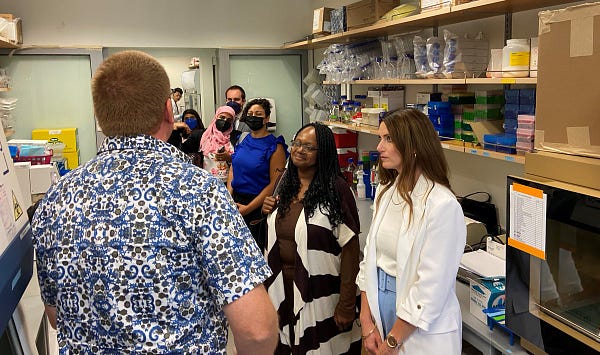
“The findings of this study are of significant relevance to Asia-Pacific regional public health laboratories due to their implications for disease prevention and control.”
“The findings of this study will be of interest to U.S. Department of Defense personnel stationed in the Asia-Pacific region and regional public health laboratories engaged in emerging infectious disease surveillance efforts.”
Duke-NUS was basically a US biodefense lab in Singapore studying Old World bat diseases. It was funded by a “huge contribution” from Duke University in Durham, North Carolina (only 10 miles from Baric’s UNC lab). In 2011, Linfa was “headhunted” into NIAID’s growing post-9/11 biodefense network. Linfa visited the Durham headquarters twice a year and was last there in April 2019.
Dani joined Duke the same year and trained in Durham to transfer protocols to Duke BSL3 Singapore lab. Per NIAID’s CREID grant, “the list of Duke equipment is exhaustive.” Dani noted in her 2019 personal statement to NIAID that she has trained and worked at the BSL4 facility in Wuhan since it formally opened in 2018.
In 2014, the real Batman gave a really good interview in Australia regarding his BSL4 research. The American TWiV host (and scientists) have easier access to BSL4 labs outside of the US, like Wuhan, because “only in the US do BSL4 facilities worry about bioterrorism.”
TWiV recently had two podcasts on the Laos Banal samples, which are a closer match to SARS2 than Shi’s RaTG13. But TWiV left out the background information on the US Government (NMRC-A), which collected those same bat samples from the exact same bat cave location in 2017. NMRC-A was also based in Singapore and funded Linfa’s bat research in 2019.
The most international man on this international team
Linfa Wang was born in Shanghai in 1960 and grew up during the Cultural Revolution in China. Just as it ended and universities reopened, he wanted to become an engineer but high scores ironically led him to biology. He did not want to study “living things” so he focused on biochemistry at the prestigious East China Normal University in Shanghai (also a NIAID R01 subtractor).
“Growing up, my family never owned a book,” Linfa said. “Well, except for Mao’s Little Red Book, but we had to have that.”
“At first, I only knew how to say ‘long live Chairman Mao’ in English,” he said. “Then I had to learn all these hard words in biology. The words were very long.”
Linfa was a big believer in faith, learning English while secretly listening to the Voice of America. He became one of the first students from mainland China, after the communist era began in 1949, to be allowed to study in the United States. This led to a PhD in biochemistry from the University of California-Davis in 1986. He published his first virus papers in 1984 and 1985 on cloning as a postdoc at the world-famous veterinarian school.
UC Davis was the lead investigator on the 2009-19 PREDICT, 2019 NIAID CREID contractor, and 2018 DARPA Preempt winner developing novel (self-spreading) animal vaccines. Linfa visited his alma mater in July 2019.
In early 2020, UC Davis and Shi published a “Synergistic China–US” ecology paper with an “eerie timing of a publication” on February 5, 2020. The UC Davis scientist recently deleted the three-year-old Tweet.
Linfa’s collaborator, Ralph Baric of UNC, was also a postdoc on the West Coast in the 1980s. Baric studied at the University of Southern California under the ‘Father of the Coronavirus’ Michael Lai. They developed a mouse hepatitis virus (MHV) model for coronaviruses. This MHV model would later become the biological building block of Baric’s No See’m biotechnology and one of the world’s most confusing viruses: “MHV in mice and SARS-CoV-2 in humans share various similarities.” Lai once said that “viruses are smarter than virologists.”
The beginnings of live bat research
In 1990, Linfa moved to Australia’s CSIRO lab, where animal health was a priority. Australia has a culture of a very clean, environmental island country, so it was always a leader in the One Health idea; animal health means human health. The “Bat Pack” of 35 Australian scientists, including Linfa, sequenced the genome of two local bats to compare to humans.
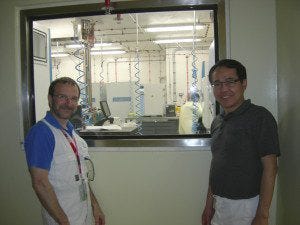
His career took a turn when a new virus emerged in the (Australian) suburb of Hendra in 1994, killing 14 horses and a trainer. Linfa managed to sequence the virus, later named Hendra virus, and helped develop a vaccine for horses. The virus turned out to be transmitted by bats. A few years later Linfa worked on another novel virus, Nipah virus, also from bats. Intrigued, Linfa scoured the literature and found numerous other viruses linked to bats.
Still, very few bat viruses are ready to transmit directly to humans. “I always say that if they could do that, then the human population would have been wiped out a long time ago because bats have been in existence for 80-to-100 million years -- much older than humans,” said Linfa.
Not much money was allocated to a human vaccine, but the idea of vaccinating the intermediary species of horses, instead of humans, was born. The Bat Pack worked on the first licensed horse vaccine against any BSL4 agent, Hendra from bats.
“After many years of research, we came to the conclusion that developing a human vaccine for this virus is nearly impossible because of licensing and commercialization complexities, as well as the high cost,” said Linfa. “So instead, we developed a vaccine for horses, which can ultimately minimize the spread of the virus to humans.”
Linfa joked that CSIRO has a BSL4 lab large enough for lions and tigers but not giraffes or elephants! Ironically (and tragically), it was too large to keep the tiny, fragile Chinese horseshoe bat alive in captivity.
Fauci followed Linfa’s vaccine lead with a contagious element
Linfa’s horse vaccine, which Fauci’s NIAID funded, led to a $53M class action lawsuit claiming bad horse side effects! A 2019 Nipah Conference presentation in Singapore claimed it’s “still not widely used due to concerns about cost and exaggerated reports of side effects.” Even animal vaccines are hard to develop lawsuit-free, so the asymptomatic nature of SARS2 was a design feature of modern animal vaccines.
In 2016, Vincent Munster and Fauci followed Linfa’s lead and worked on a MERS vaccine for camels. Fauci echoed Linfa and explained that NIAID developed a human vaccine for almost every outbreak like MERS, but pharmaceutical companies did not have a viable market, so the concept was to vaccinate the camels to protect the people.
FDA vaccine approval for humans takes 15-20 years, but it was just 2-5 years for animals. This bureaucratic loophole created a huge incentive for live bat research. Monkeys are expensive, and PETA did not care that much about the bats. This was one of many reasons that bat biologists dislike bat virologists (those are two Western academic scientists living in China and studying bats).
Fauci’s aerosol specialist, Munster, replaced Middle East camels with American deer for this R&D self-spreading vaccine project which became known as SARS2.
SARS2, allegedly from Old World bats (or rats) does transmit efficiently in New World (lab) bats, rats and (lab) animals.
A 2019 “e.g. transmissible vaccine” paper mentioned American deer and fruit bats as a transmissible model. Max Planck's blog on the controversial self-spreading vaccine subject, and note the Science podcast at 14 minutes.
Linfa heads home to find the origin of SARS1
As with Shi, Linfa’s career took off with the SARS outbreak in 2003. He was one of eight WHO members tasked with finding the SARS source. He was picked because of his Chinese roots while knowing the local language, culture, and politics. Linfa knew that wet market civets (Chinese raccoons) were just the intermediary species, not the natural reservoir, since antibodies were found in city market civets but not on farmed animals (similar story to SARS2).
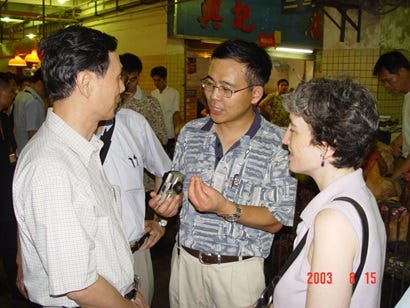
Chinese former head of CDC recently jabbed at Western virologists, using a picture of an American raccoon regarding the origins of SARS2. Replace the Chinese civets or raccoons with American deer or camels to get the idea.
“Given my background in Hendra and Nipah, I had a hunch that bats were perhaps the natural reservoir,” said Linfa. “But initially, it was hard to persuade Chinese scientists to accept this.” During this project, Linfa met Dr Shi Zhengli of the Wuhan Institute of Virology. "Shi was the only virologist who believed me and was willing to collaborate with me."
The two have since co-authored dozens of papers, including one in 2005 that pinpointed Chinese horseshoe bats as a reservoir of SARS-like coronaviruses. It would take another decade before Shi and Linfa published proof by isolating a potential SARS1 progenitor called the WIV1 strain.
WIV1 was later mentioned in DARPA Defuse, UNC, and RML papers because WIV1 was the first of very few bat samples ever to be isolated. Most (un)published bat samples are worthless sequences, codes, and letters. Most bat samples only become valuable once the virus is “resurrected” using reverse genetics in US labs.
Both Fauci (30:00) and Baric openly brag about “reverse genetics” for vaccines.
Linfa, the Director of Duke’s EID
In 2012, Linfa was “headhunted” into NIAID’s growing post-9/11 biodefense network and named the director of Duke’s Emerging Infectious Disease program. The Duke-NUS “bat pack” with Dani started around 2017. Linfa served as a conduit into Wuhan (and Shi) for the US virologist community. In 2017, both Linfa and Shi traveled to Washington, D.C., to give presentations at a bat virus conference headlined by Fauci.

Shi was always focused on bat virus sample collection and was paid to do just this by Fauci’s NIAID. Shi collected the famous RaTG13 bat sample from the Mojiang mine using NIAID funds. NIAID referenced the three dead Mojiang miners from 2012 in their CREID project. A copy of RaTG13’s kissing cousin, RaTG15, was at RML in Montana in early 2020.
Linfa later published a 2017-20 serological study on the Chinese RaTG13 and Laos Banal samples with CREID funding. But Linfa focused on bat immunology and how a bat’s immune system dampens virus inflammation. Why did the three Chinese men in that mineshaft die, but the bats live?
The business we’re in, emerging infectious disease, people never realize there’s a huge return. Well, now they do…In Wuhan, if three people died and it was controlled, would we know it? No. This is happening all the time, it’s just in remote villages where people die. You bury them and end of story, right?
Most believe the big money was in human vaccines, but there was a lot of money in the animal vaccine bureaucracy. Linfa received a $10M grant from the Singapore government, an “unthinkable” sum just a decade earlier.
The bat’s most remarkable characteristic, perhaps, is hinted at in the Greek roots of its scientific name: Chiroptera, or “hand wing.”
Bats are the only mammals capable of sustained flight. Hitchhiking viruses can therefore spread themselves far and wide — the Mexican free-tailed bat, for one, can migrate at least 1,200 kilometers, roughly the distance between Toronto and North Carolina.
But for Linfa, he suspects that flight has given the bat another evolutionary advantage: a more robust immune system.
Bats are persistently infected with viruses — but they rarely get sick. Perhaps bat immune systems have evolved to find a kind of sweet spot, Linfa proposes: the ability to keep viruses at bay without also going overboard and self-destructing.
“That’s the thing we’re interested in,” Linfa says. “A lot of viruses kill humans but it’s not necessarily because of the virus doing damage to you . . . it’s actually your body’s defense that goes overboard.”
Mexican free-tailed bats were an animal model proposed in DARPA Defuse and now susceptible to SARS2 infection (but not transmission like Egyptian fruit bats). And a huge Mexican free-tailed bat colony in Austin, which Daszak never visited, was a source for the University of Wisconsin BSL3 bat infections.
One World, One Health
The new concept, “One World, One Health,” is based on the understanding that humans, animals, and the environment are inextricably linked, indicating that the world has suddenly realized the interrelation between ecology, animal diseases, and public health, striving to restore and maintain harmony and synergy.
It is a blurry line, but this civilian boondoggle was more of an academic science fair experiment than a military biodefense project. It involved more dorks than spooks and more USDA than PLA. CAS had Western biologists on the local payroll mapping Chinese bats, and NAS had high-level Chinese officials elected as members. They all meet at least once a year. There was a century of ties between U.S. and Chinese medical education communities, that reach back to 1835 and 1917.
Linfa claimed there was a long list of human diseases that could potentially use his bat research: aging, Alzheimer’s, arthritis, AIDS, cancer, cardiovascular, diabetes, etc.
Linfa recently boasted that he was “the only non-retired emerging infectious disease (EID) scientist who experienced all major emerging zoonotic viruses from Hendra to Covid-19.” He, like most Chinese, believes bats are a good fortune.
We need more heroes
To those seeking answers, I offer encouragement. There are good people striving for the truth, working together in and out of government, and they succeed.
To those that withhold, I pray for you. Find the moral courage to come forward. Don’t let a lie be our legacy to posterity.
People will forgive. A commitment to truth is in the heart of this nation.
Semper Fi

Fast forward to the hot Washington D.C. summer of 2021, and a DARPA fellow named Major Joseph Murphy walked off the heavily guarded DARPA campus. The US Marine “pushed the files off-site.” Then Murphy (or another) leaked the DARPA Defuse bid documents to DRASTIC and later Project Veritas.
Murphy realized the coverup was more “localized” after watching the Fauci and Rand Paul debate in May 2021. He wrote that “unclassified files would be concealed on a higher network and found them where I expected them to be.” Someone with a very high-security clearance moved this DARPA Defuse losing bid, an unclassified project posted on twitter in 2018, into a classified folder in the summer of 2021. Murphy wrote, “The files, completely unmarked with classification or distribution data, were placed in this folder in July 2021.”
A SARS1 bat vaccine is now called SARS2?
Major Murphy’s letter to the Inspector General of the Department of Defense gets right to the point in the first sentence: “SARS-CoV-2 is an American-created recombinant bat vaccine.” For the first time in this lab leak debate, an insider has told us outsiders what the virus actually is: an animal vaccine!
An easier-to-read transcript and another summary, but skip the mRNA and hydroxy stuff. Others have debated a human vaccine, but no one extensively detailed an animal vaccine theory. There was a thread on a (Baric) LAV animal vaccine and self-spreading animal vaccines. The (transmissible) “bat vaccine” idea was from America, with live bats kept in both Wuhan and Montana.
Murphy was in the “back row” of the DARPA meetings as he pieced together what the virus was: a hybrid Live Attenuated bat Vaccine (LAV). This explained why SARS2 was so contagious but not as lethal. An animal vaccine (e.g. SARS2) would be designed to look natural to the local (Chinese bat) species using a ‘consensus’ sequence, which Dani and Linfa both referenced from UNC in 2019.
Murphy was confused, though, because this ‘virus’ does not infect Chinese bats, but it does infect and transmit in Western biolab bats called Egyptian fruit bats (EFB). In DARPA Defuse Baric proposed to infect Chinese bats with WIV1 but he later teamed up with DARPA winner, Vincent Munster, and they infected EFB bats with WIV1, in Fauci’s Rocky Mountain Lab.
Who funded DARPA Defuse?
No, the Chinese did not fund a DARPA project to protect the American “warfighter,” a term used seven times in the Defuse bid. The HHS budget (NIH, FDA, CDC, etc) is 70 times the size of CAS and twice the size of the Pentagon’s budget. There are 100,000 US troops stationed in Asia, and the US military bases were quarantined during the 2003 SARS outbreak. The DARPA Defuse stated goal was “to defuse the potential for spillover of novel bat-origin high-zoonotic risk SARS-related coronaviruses in Asia.”
Chinese bats and American made vaccines were always on the mind of Fauci. The first SARS outbreak was still on Fauci’s mind from 2003 to late 2018. In 2018, when he was asked about Dual Use Research of Concern, he simply stated, “I don’t have a good answer for you”. In 2012, Fauci admitted most DURC comes through NIH, not DoD (37:00). In early 2018, Fauci (16:00) bragged that “NIAID and China have a long-standing history of research cooperation.”

Fauci truthfully testified that his R01 outsourced work to Wuhan’s Shi’s BSL2 was ‘molecularly impossible’ to create SARS2. A line he often repeats because it is true. Mice are not an airborne transmission model for coronavirus. SARS2 doesn’t even grow in mice without further lab modifications. Lab mice are safe (i.e. not airborne) because they “don’t sneeze or cough” (1:27:00). As Fauci explains, “anyone that knows anything about virology” knows (hACE2) mice are not a “pathogenic or transmissible” model for SARS2. But Fauci funding a project like DARPA Defuse was molecularly possible to have created SARS2.
Murphy’s letter to the Inspector General tells us, “as is known, Dr Fauci with NIAID did not reject the (DARPA Defuse) proposal.” Fauci’s $6B NIAID budget was twice the size of DARPA’s $3B budget. Fauci’s RML lab in Montana was the technical lead on the winning DARPA grant (the Munster-led team that beat Daszak and Baric in 2018!).
When confronted about funding the DARPA Defuse grant, Fauci was very specific with his prepared denial, claiming, “We have never seen that (Defuse) grant, and we have never funded that grant.” The word “that” grant was doing a lot of work, as partial funding of revised grants with new technology/labs/vendors was always an option.
Only Dani’s name cross referenced on the DARPA grant from 2018 and Fauci’s CREID project, submitted in 2019. Shi’s name was not listed on the new CREID grant, but Dani admitted to being inside the BSL4 through November 29, 2019.
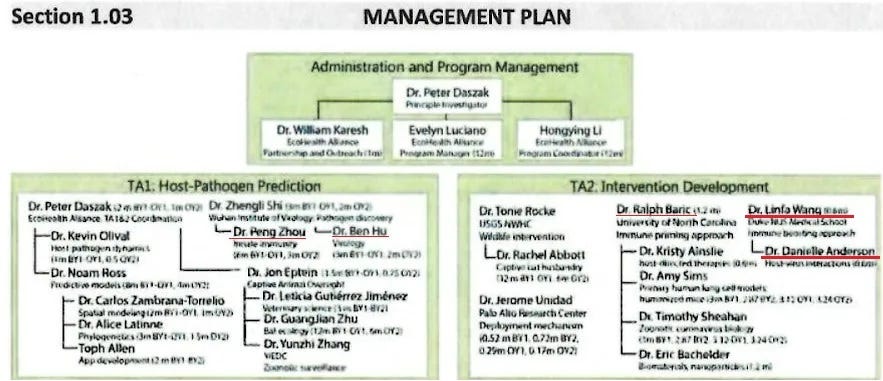

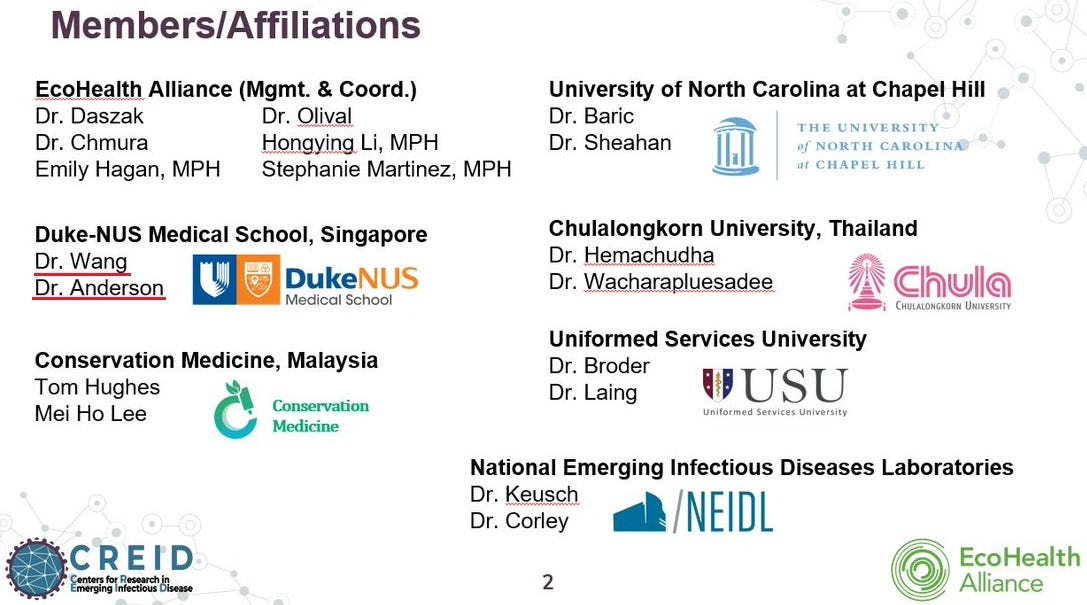
Cell phone activity at BSL4
In the same summer of 2021, the lab leak debate was in the news, and the “Fauci Gate” emails were released. The President asked for an intel report which was bureaucratically vague but clearly stated:
The IC assesses that an assessment about abnormal activity at the WIV in fall 2019 lacks support and does not offer diagnostic insight. The Multi-Agency Collaboration Environment (MACE) published a report assessing that the pandemic began in October 2019 because of a release at the WIV.
That cell phone report showed a lack of activity at the BSL4 during October 2019. The public report also noted two “devices of interest” that appear to be both Linfa and Dani. Both of these Duke-NUS employees were contractors on Fauci’s ongoing 2019 CREID project.
Linfa exclusively used a BSL4 for all of his live bat challenge studies. He also preferred if someone else was in charge of feeding the high-maintenance, insect eating Chinese bats. Transmissible vaccine research was always in a BSL4 (e.g. deer mice at RML) creating a false sense of biosecurity, and a fateful decision to test a contagious animal vaccine on foreign soil.
Possibly Dani’s phone (above) because she was a co-author on a Kenya camel paper, and Duke hosted a hospital in Kenya with $15M funding from NIH. She was the lead author on a March 2020 bat paper, performed in a BSL3 at the China CDC in Beijing. She told CNN she planned to return to Wuhan in “early 2020.”
Dani visited Wuhan in 2017 and even admitted in a March 2020 Facebook fact check post that “I have worked in this exact (BSL4) laboratory at various times for the past two years.” Her June 6, 2019, CV submitted to NIAID said she “trained and worked” in the BSL4. The “application date” for CREID was June 28th, and per Dani’s cell phone, she traveled from Beijing to Wuhan on the same day and entered the BSL4 from July to October 2019.
Most likely Linfa’s phone (below) at BSL4 from November 24-30, 2019.
Linfa’s off-the-record trip to Wuhan coincides with Dani’s BSL4 security camera time stamp and her last day in the BSL4, November 29, 2019.
Why Wuhan?
The Duke-NUS live bat colony, maintained by Dani, consisted of cave nectar fruit bats (Eonycteris spelaea). This specific Duke colony was listed in the 2018 DARPA Defuse proposal but SARS2 does not apparently infect this species. Linfa later made clear Duke was only responsible for bat immunology, not virology (UNC) or transmission (RML).
Duke (above) was bat immunology and UNC (below) bat virology
Linfa explained bats don’t reach sexual maturity until 3 years of age, and they rarely have more than 1 or 2 offspring per litter. Bat colonies are, therefore, hard to sustain and are usually too small to carry out experiments.
In 2014, Linfa admitted that he tried to keep a Chinese microbat colony in his lab, but gave up because they are too hard to breed and feed. He called it the “puppet show” having to wave worms on tweezers in front of a bat.

This critical decision forced Dani to travel to Wuhan. Chinese labs, in 2019, reported successful breeding of Chinese horseshoe bats producing one pup per year. The WIV held patents for a “worm-eating bat cage” and an “artificial breeding method for wild insect-eating bats”

Linfa later admitted there was “no breeding colony of Rhinolophus” Chinese bats, meaning born into captivity, but this was a white lie because Dani was to test targeted immune boosting agents on “wild-caught captive” Chinese bats inside the WIV. NIAID’s CREID project mentions “experimental infections” of live bats. This was an academic project designed to fail. A planned mistake that turned into an honest academic crime.

What exactly was Dani doing in the BSL4?
Dani and Duke claimed to be working on Ebola and Nipah while in Wuhan, but her 100+ published papers show zero interest in Ebola. She had one Ebola paper in the past decade, listed as mid-author with her Wuhan bat immunologist colleague. What was Dani doing? A “scientific merit review” on “coronavirus replication” in “bats used for experimental infections.” And this NIAID grant was due by November 2019.

Dani’s CV proudly declares, “My research aims to identify host factors important for…coronavirus replication” and “I have extensive experience in designing animal experiments with…bats.” Most of her papers are about Asian bat immunology with an interest in coronaviruses.
Dani admitted to researching bat-borne coronaviruses in China “for quite some time” in a March 2020 Australia radio interview. She referenced her own 2019 bat paper, referencing a 2016 UNC paper using reverse genetics. When she was asked if the virus can be manmade, she admits technically yes, but using “reverse genetics to engineer changes to attenuate (weaken) for use in vaccinee (is) extremely extremely difficult.” But Dani was listed next to Ralph Baric, who proposed to insert furin cleavage sites into SARS-like viruses and test in Wuhan.
A linguistic coup?
Dani and (her former) boss Linfa wrote a Lancet article in February 2020, lobbying to rename ‘Wuhan virus’ to “Han Acute Respiratory Syndrome Coronavirus” (HARS-CoV). The H stands for Han, which was on the opposite side of the Yangtze River where Dani lived (dorms in Wuchang) and worked (BSL4 in Jiangxia).

Ironically, Linfa and Dani’s collaborator, Baric of UNC, helped change the name from Novel Coronavirus (2019-nCoV) to SARS2 (SARS-CoV-2). Shi was not happy and promptly emailed Baric in February 2020. “We had a fierce discussion among Chinese virologists” about the name of SARS2 being “truly misleading.”
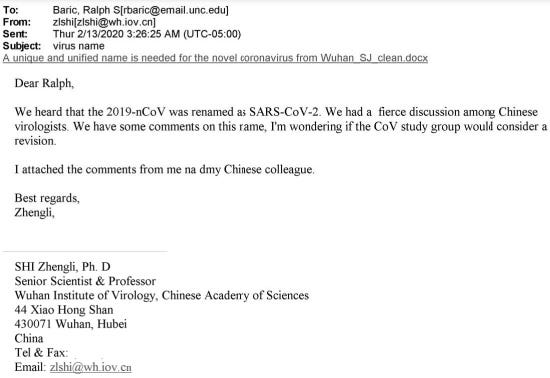
The Chinese researchers argued about significant differences in the viral genome, transmissibility, pathogenicity, and pathogenesis of SARS2 versus SARS1. At the same time, Wuhan scientists warned the world that Covid was airborne and more contagious than SARS1, and both Fauci and his ‘aerosol specialist’ Munster downplayed concern for aerosol transmission. Western virologists, including UNC’s Ralph Baric, achieved a bit of a ‘linguistic coup’ by tagging SARS2 to SARS1 and its origins in a Chinese wet market.
Post-lab leak statements
Early in the 2020 pandemic, Linfa and Dani were (oddly) more interested in creating an antibody test. “We could trace back patients who have been infected previously,” said Dani in February 2020. In January, Linfa asked Shi to “take blood samples from her (BSL2) lab team” and claimed all negative. But the rushed Duke antibody test was a bust, only finding older SARS1 patients.
Fauci showed unusual interest in the three sick intel report, telling FT, "I would like to see the medical records of the three people who are reported to have got sick in 2019. Did they really get sick, and if so, what did they get sick with?" Apparently, Dani’s co-author, WHO lab leak ‘investigator’ Marion Koopman, knows the names of “maybe one or two” who were sick.
The media speculated that YanLing Huang was patient 0, but she was studying near Hong Kong in 2019. A Times and NBC report alleged a dead Wuhan scientist, with a vaccine patent, was thrown off the roof of the WIV. However, he was stationed in Beijing and collaborated with the University of Minnesota. Again SARS2 does not infect (hACE2) humanized mice or grow in Vero cells. It does not transmit in monkeys or any other Chinese animal.
Recently three Asian names from Shi’s BSL2 lab were reported sick in November, but that appears to be a rumor from “two foreign government scientists.” It was single sourced from a terminated State Department contractor, who conflated November with October. It was later amplified by a colleague and friendly WSJ reporter with a history.
Dani later claimed “if people were sick, I assume that I would have been sick—and I wasn’t, I was tested for coronavirus in Singapore before I was vaccinated (presumably in early 2021) and had never had it.” She was a healthy 40-year-old runner, spending hours in a BSL4 space suit, and SARS2 was notorious for asymptomatic transmission.
The uptick in Wuhan hospitalizations allegedly showed up on US intel radar the 2nd week of November 2019. Dani never explained why she left Wuhan on November 29th after three years or why she left Duke in 2020 after eight years. It was safe to assume Dani never met her “scientific merit review" deadline of November, but Fauci awarded the CREID grant anyway.
Wuhan was the live Chinese bat capital of the BSL4 world
Dani was upset when confronted with video evidence about the live bat colony at the WIV, but she didn’t deny its existence. “There are scientific meetings dedicated specifically to bat virus research and the last such meeting that I attended was in Colorado, USA.”
Dani, Shi, and Peng Zhou visited Colorado State University (CSU) in 2017 for a bat conference with Munster. During the same CSU meeting in 2022, without Shi or Dani, Munster recruited postdocs for his “transmission studies in Africa.”
Peng Zhou was a fellow Linfa protégé and was also listed on DARPA Defuse, but not CREID. Unlike Dani, he was actually more interested in the Ebola subject.
In February 2020, Dani gave NBC News a dress rehearsal of what likely happened back at the WIV in October 2019, even handling live bats! Basically, wherever Dani traveled, live bats were in the vicinity.
In 2022, Dani tried to explain why she was in Wuhan in 2019, not Beijing or Shanghai? It was the only BSL4 for studying “what makes (Chinese) bats special” and “infecting (Chinese) bats” with foreign pathogens. She was “developing novel diagnostic platforms (NGS)” for detecting unknown coronaviruses in bats.
This Duke technology could be used for measuring bat shedding and bat vaccine efficacy, as outlined in DARPA Defuse. It was developed for “disease prevention and control” with US Military funding and has “personnel stationed in the Asia-Pacific region.”
Fauci and Linfa
In 2022, Linfa was in Utah to give a joint keynote address with Fauci. Linfa helped organize the conference and took note of his audience. He reminded everyone to the “widespread SARS‐CoV‐2 infection in white‐tailed deer throughout the United States.”
Infection rates and trends suggest both active transmission among deer and multiple human‐to‐animal transmissions, making it feasible that deer may act as a new, manmade reservoir for SARS‐CoV‐2.
Linfa was the spokesperson of Singapore for emerging infectious diseases. It was therefore safe to assume that Fauci, a longtime funder, colleague, and sponsor of Linfa’s December 2019 Singapore bat conference, would have known of this high profile resignation, on this high profile January 10th date.
Dani the human
I’ve reached out to Dani and her colleagues, but she rightfully remains quiet, for something she had little to do with. If Covid only infected kangaroos, I would suspect her fellow Australian virologists. If Covid only infected pandas, I would suspect her fellow Chinese virologists. But Covid only infects American deer, so I suspect her fellow American virologists.

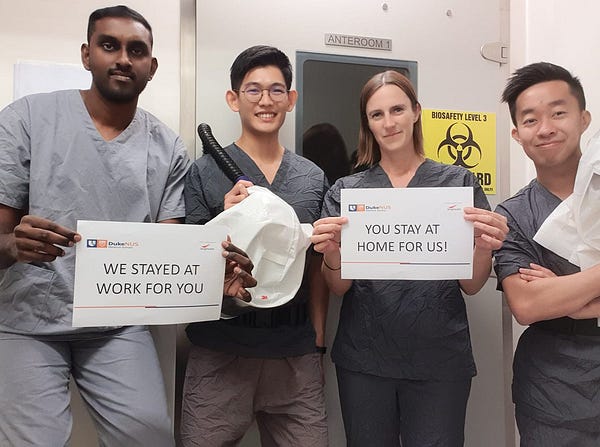
On a personal note, I find Dani to be a fascinating woman. Magoffin was her maiden name, and it is hard to find public information. She was a biological loner in Wuhan, so her new Australian colleagues, in 2022, asked her to give a presentation on what exactly she was doing in Wuhan? She has a hard time explaining it because, pre-2020, there were maybe six people on the planet who understood bat immunology. There was really only one person on the planet who could test a self-spreading bat vaccine on Chinese bats in a BSL4, and she was (unfortunately) the only one.


I’ve maintained this was an R&D accident. Only six people on the planet knew the SARS2 sequence before it was published on January 10th. One of the six was Linfa, who explained his honorable resignation date.
Disclaimer: again, this is a hypothetical as Dani is blameless for something potentially created by others. But a NIAID contractor, a world-class Asian bat immunologist, was inside the BSL4, at the same time a world-class airborne bat vaccine came out of it. Dani and Linfa are listed on the DARPA proposal next to the name of a world-class bat virologist, Dr Ralph Baric of UNC, with $120M of NIAID funding. All three are listed on Fauci’s $82M CREID project, awarded in 2019.
NIAID had already funded most of the DARPA proposal and Baric had a close relationship with Fauci, unlike DARPA who rejected the grant. Baric and his colleagues specifically said UNC would insert human-specific furin cleavages (published in 2018) into Chinese bat viruses for testing in Wuhan. Baric recently received $65M from Fauci’s NIAID and has gone radio silent, unlike Shi and Linfa.







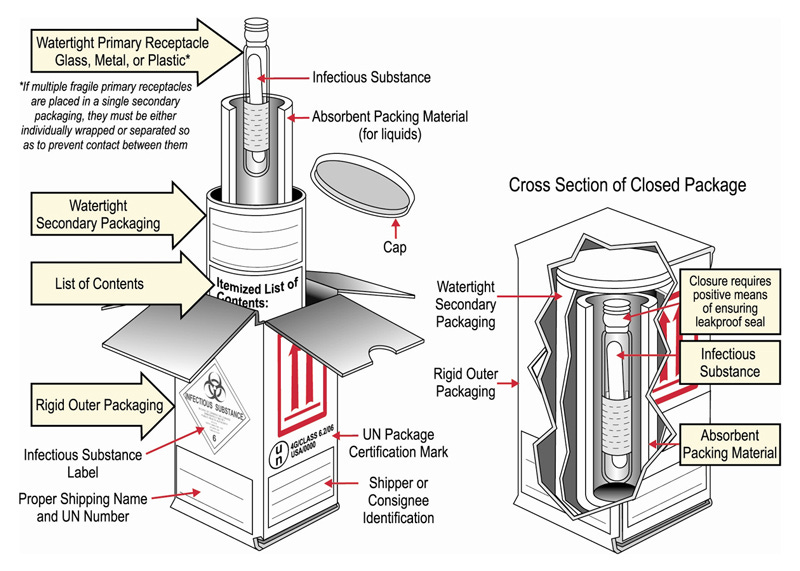





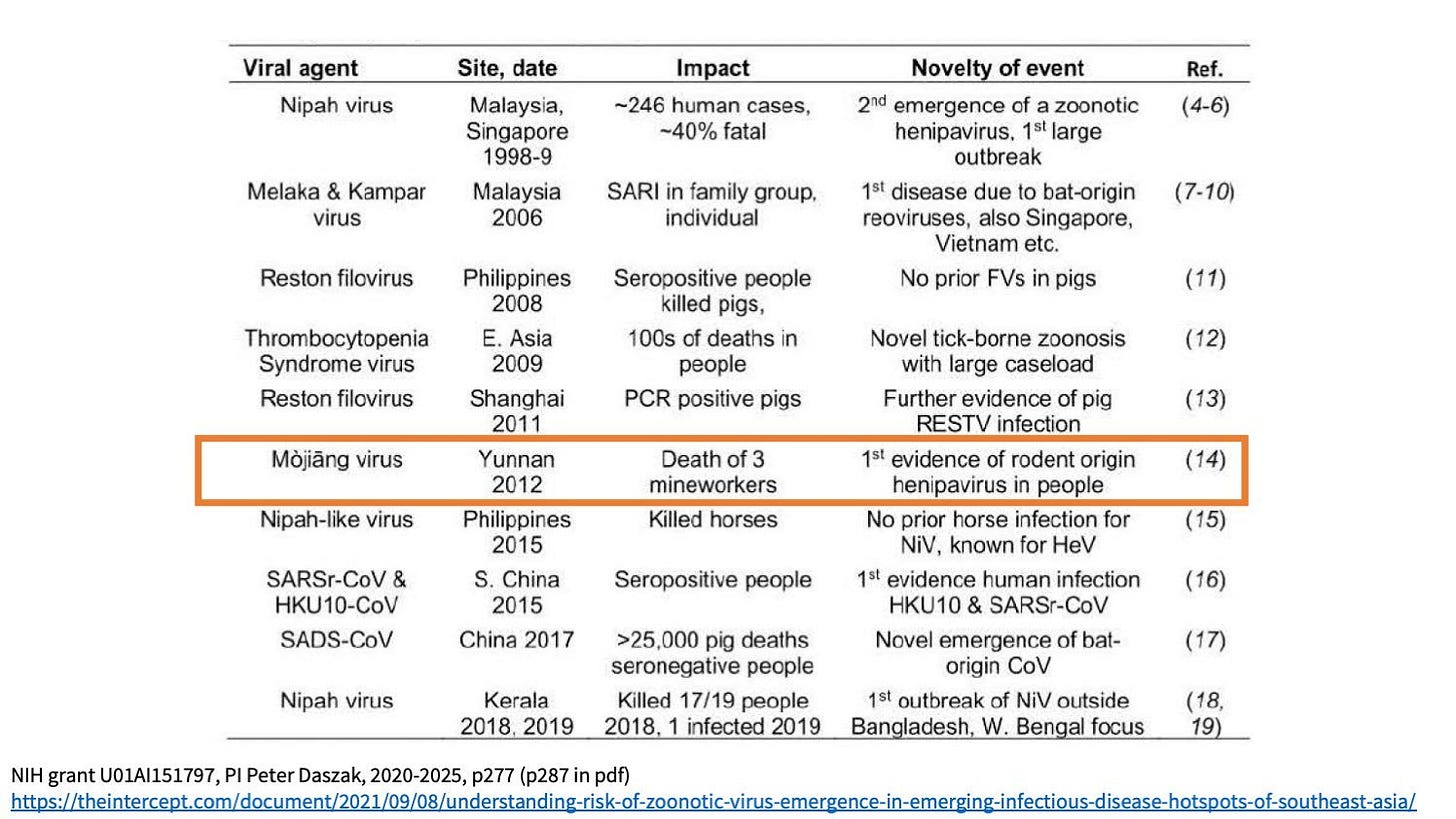
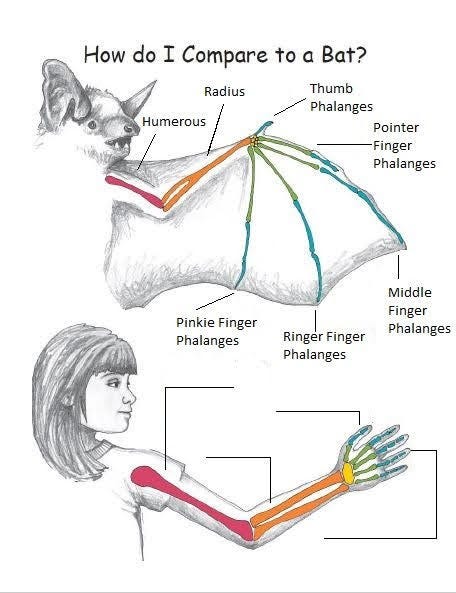


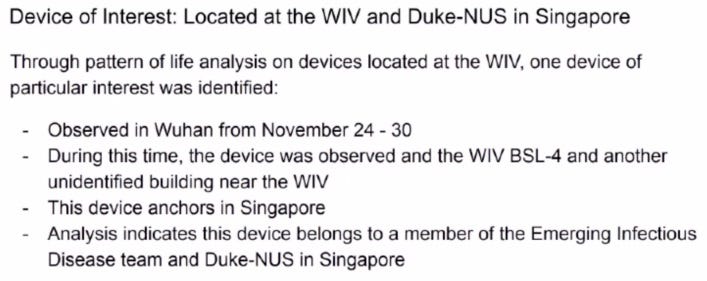
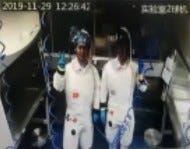


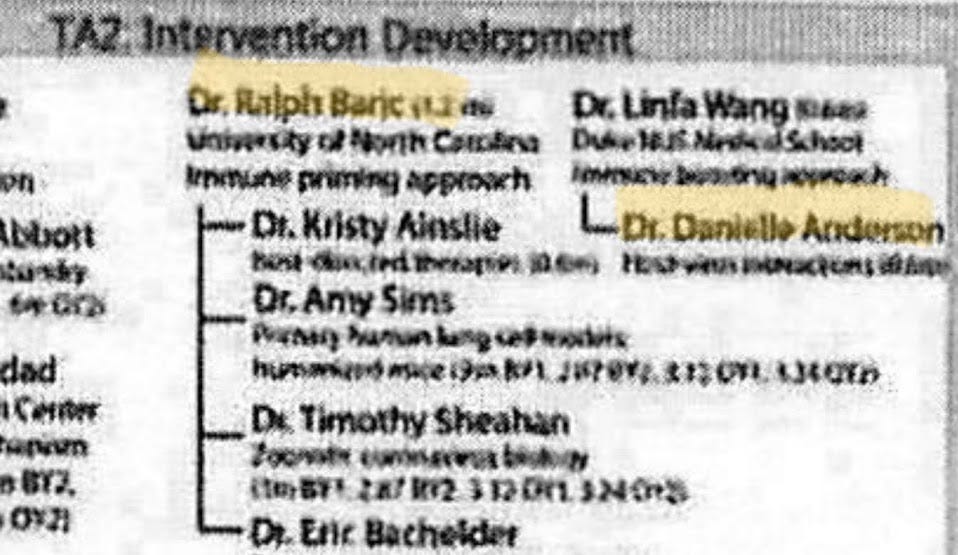
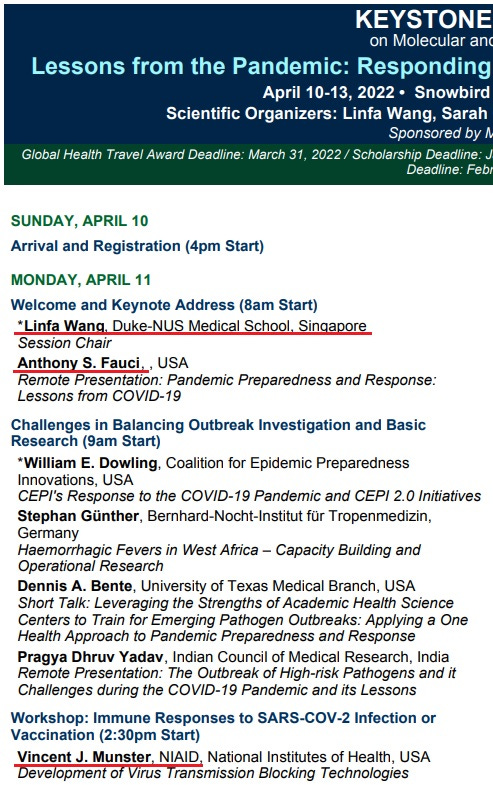
I’ve just read this and think I vaguely understand! For us non scientists a very short summary of the hypothesis would help! When do you think it escaped and from which actual location, and do you think it escaped or it was a planned release for testing?
I’m a retired GP in the U.K. and am convinced my husband gave me, and one of our teenagers, covid last week of Nov/first week of Dec’19. He travels throughout Europe spending time in airport hotels with crews from all over the world. Someone he worked with was ill just before he became ill.
Another amazing text Jim. HARS-CoV!!
Is there hard evidence UNC/Baric sent or intended to send their enhanced bat coronaviruses or vaccine candidates to Wuhan for testing? I remember Baric stating he never sent his chimeras to WIV. In Defuse, WIV's role was limited to providing samples, wasn't it?